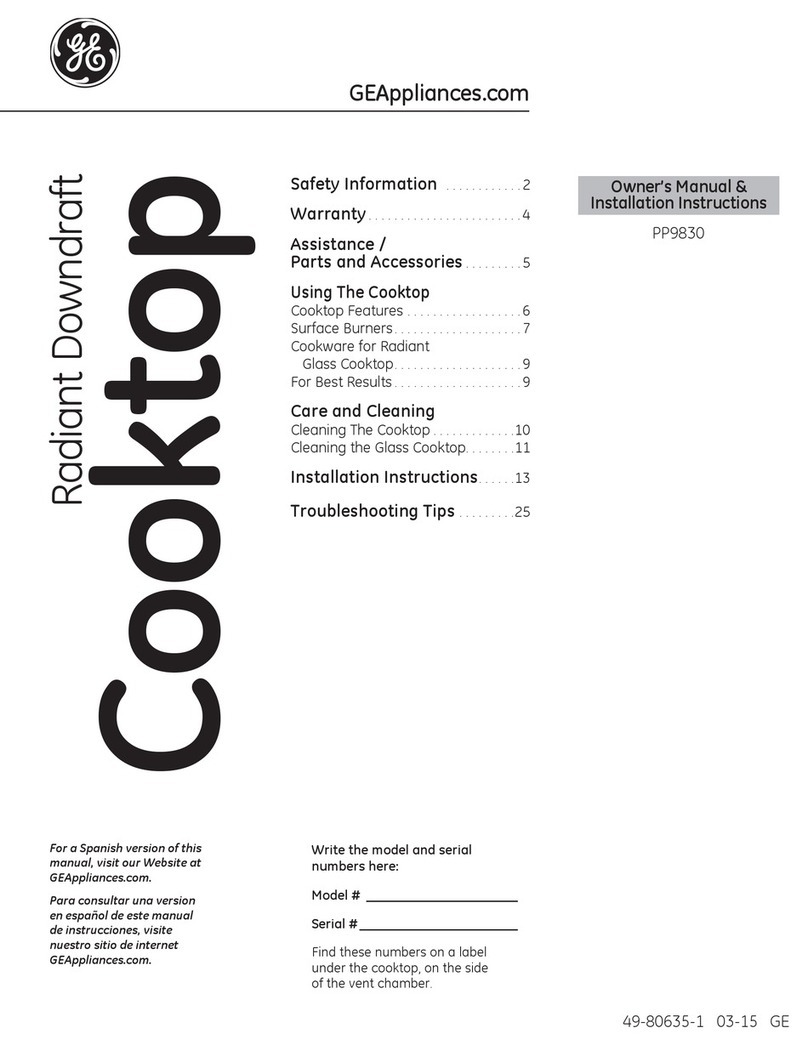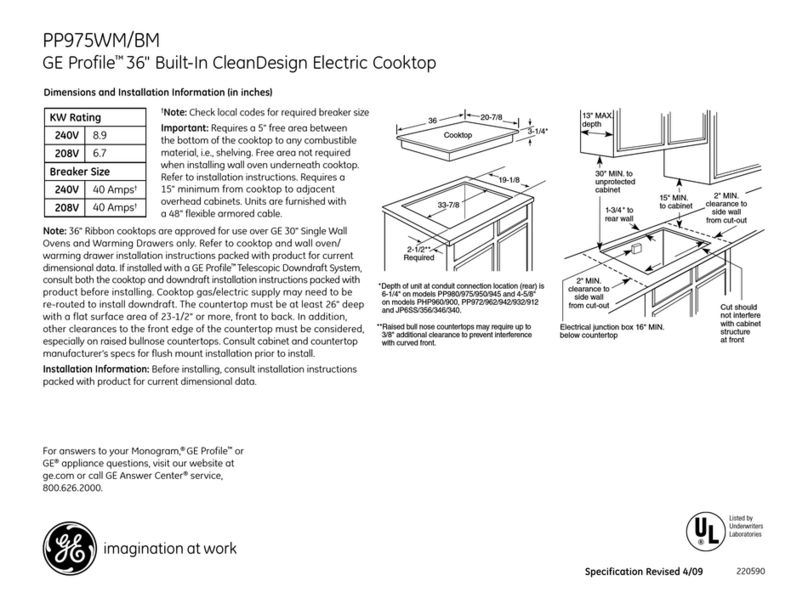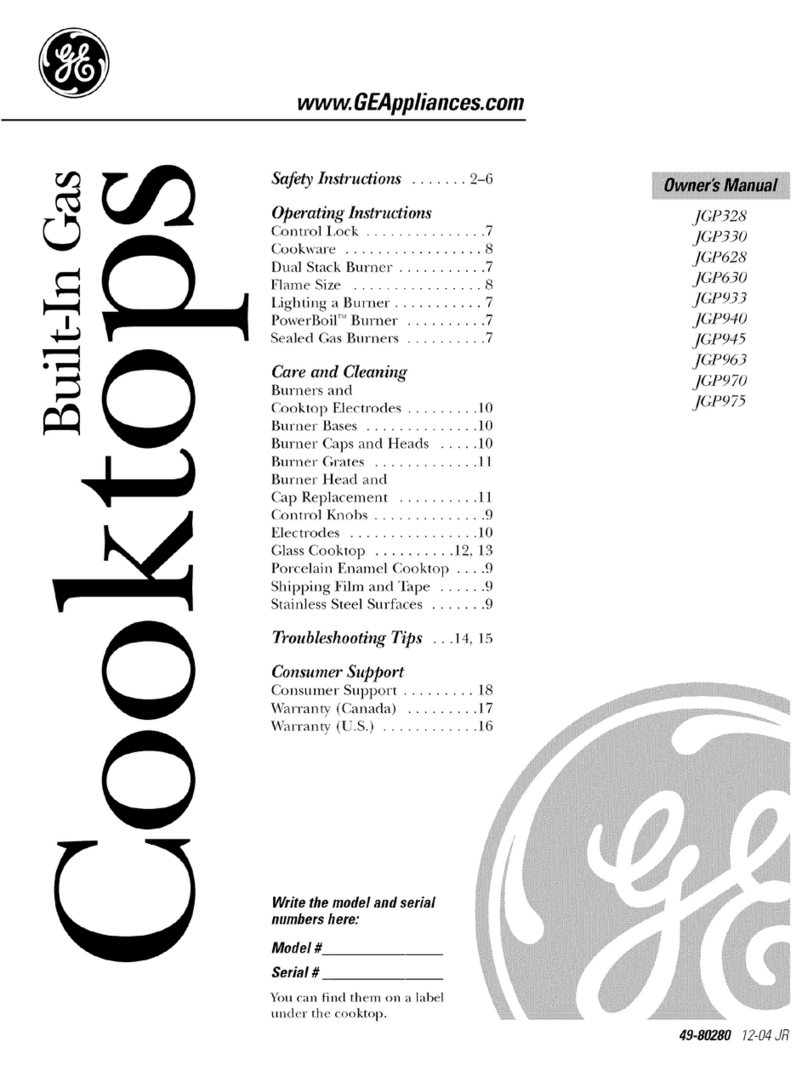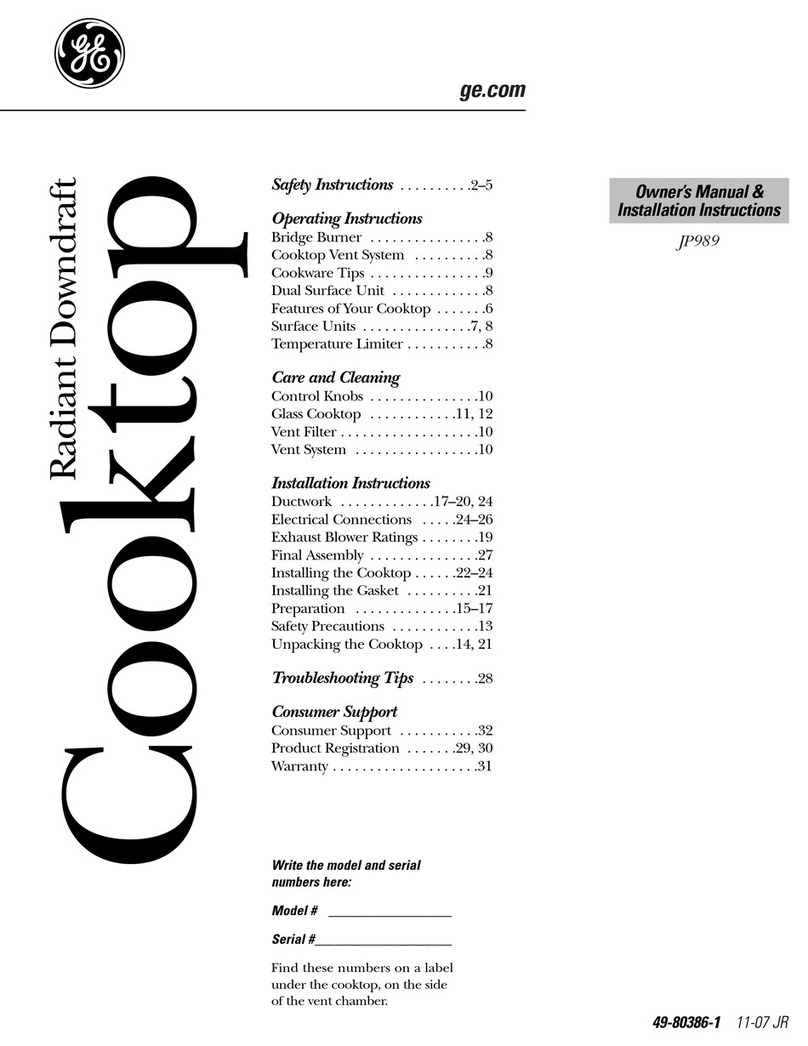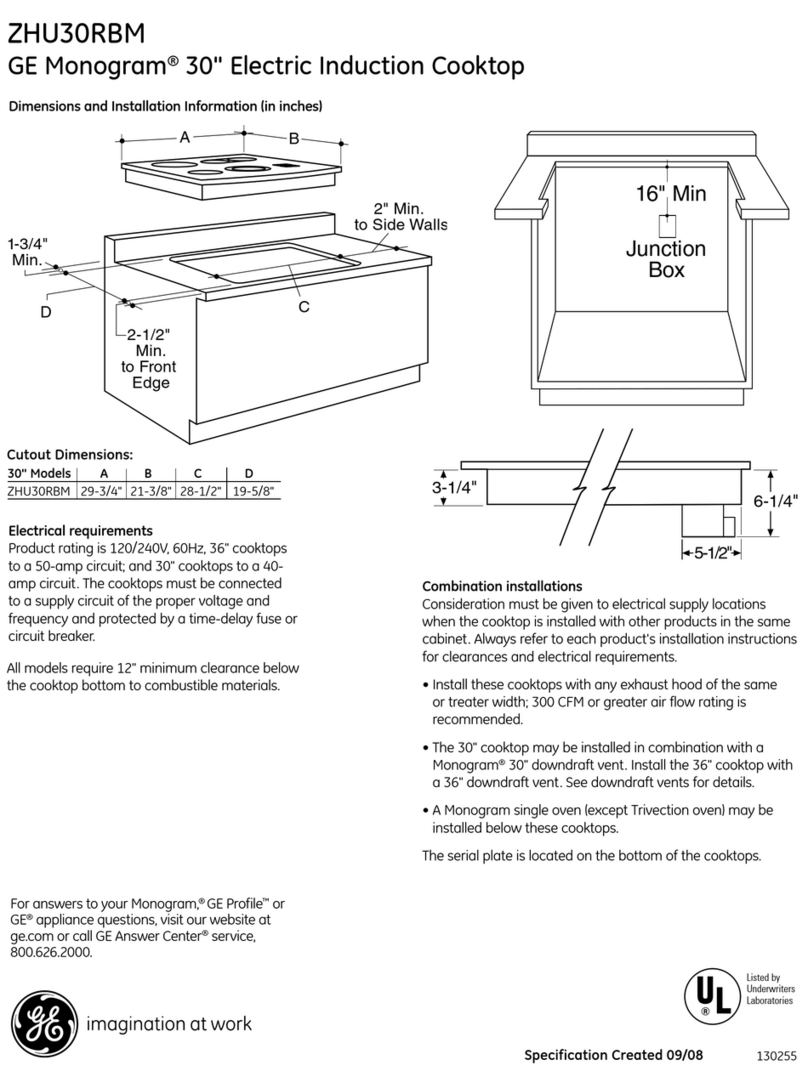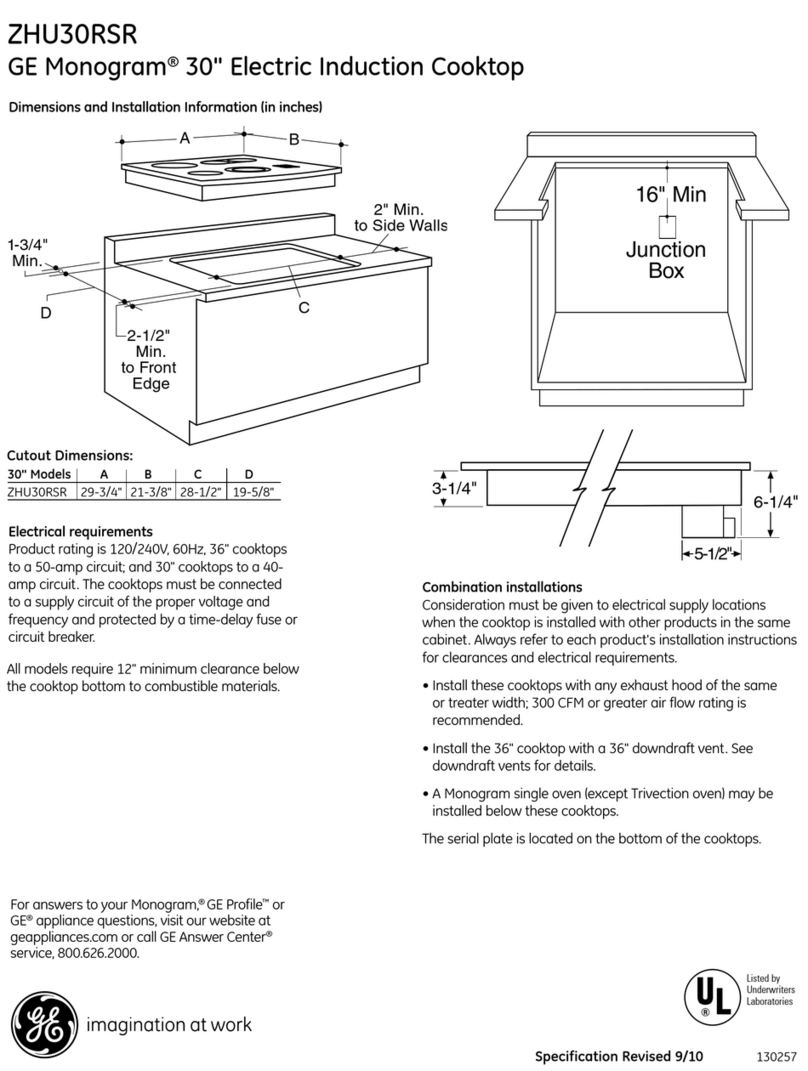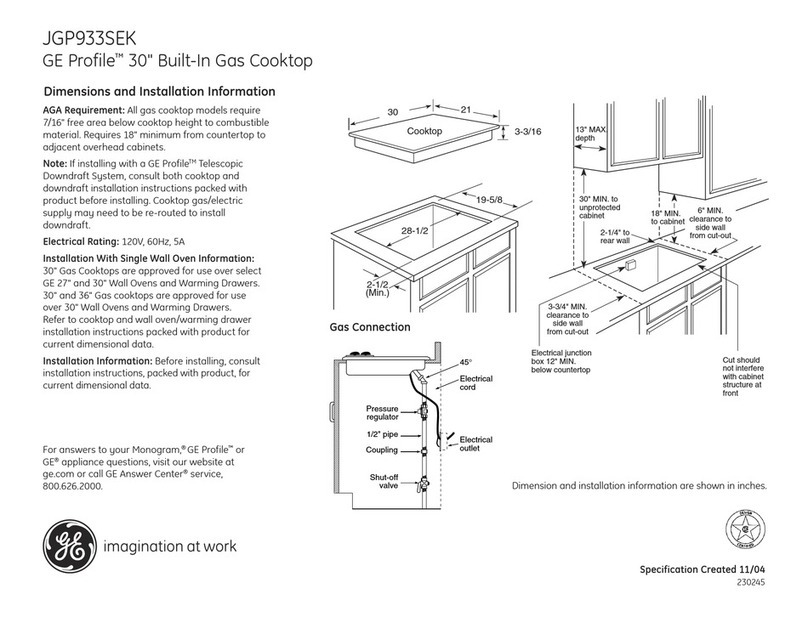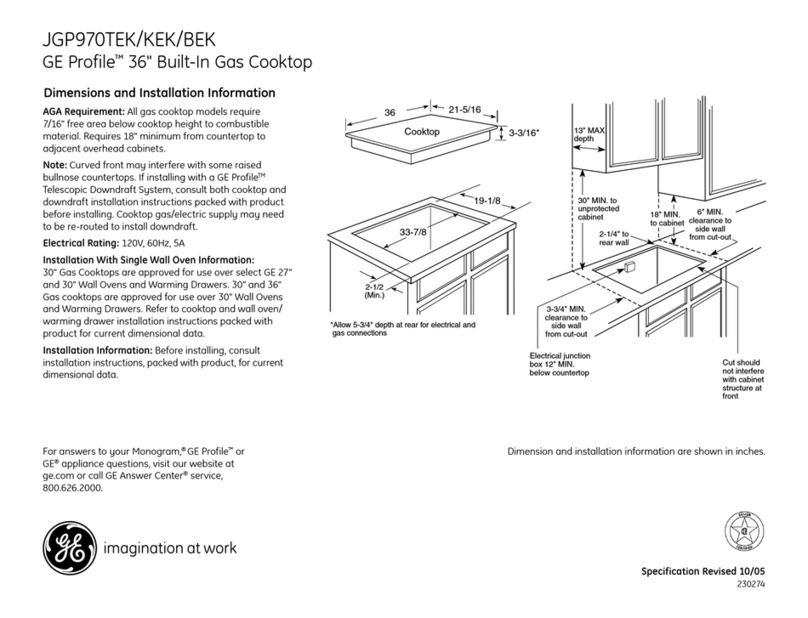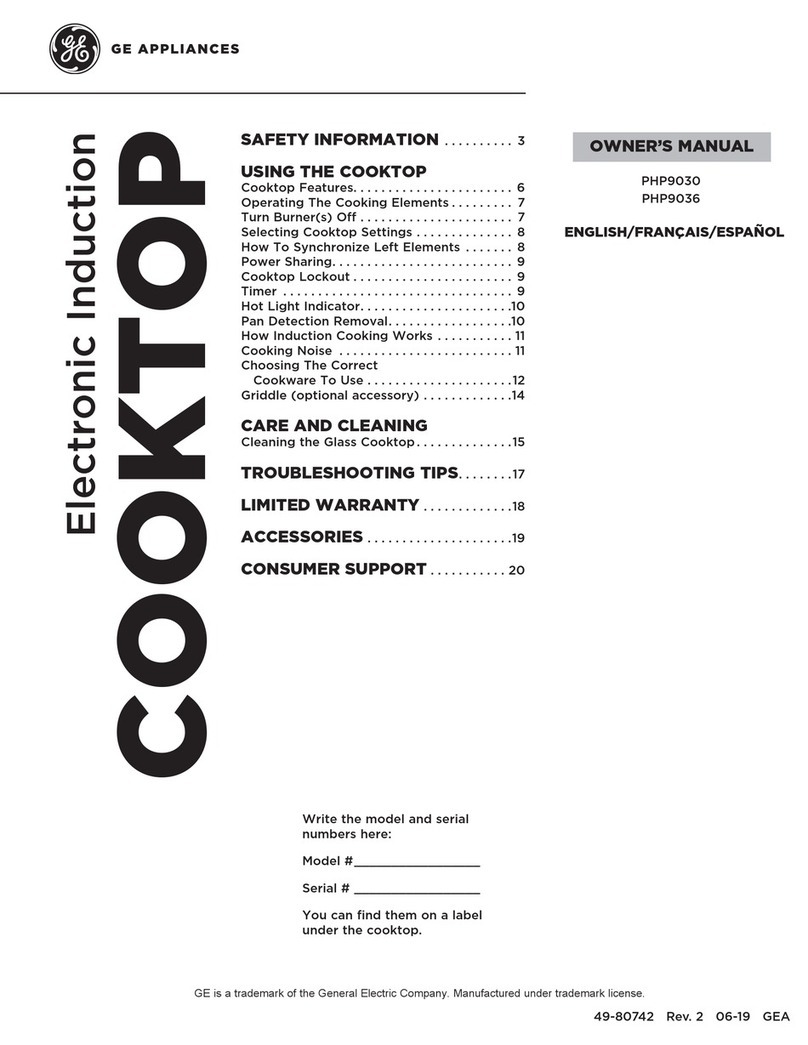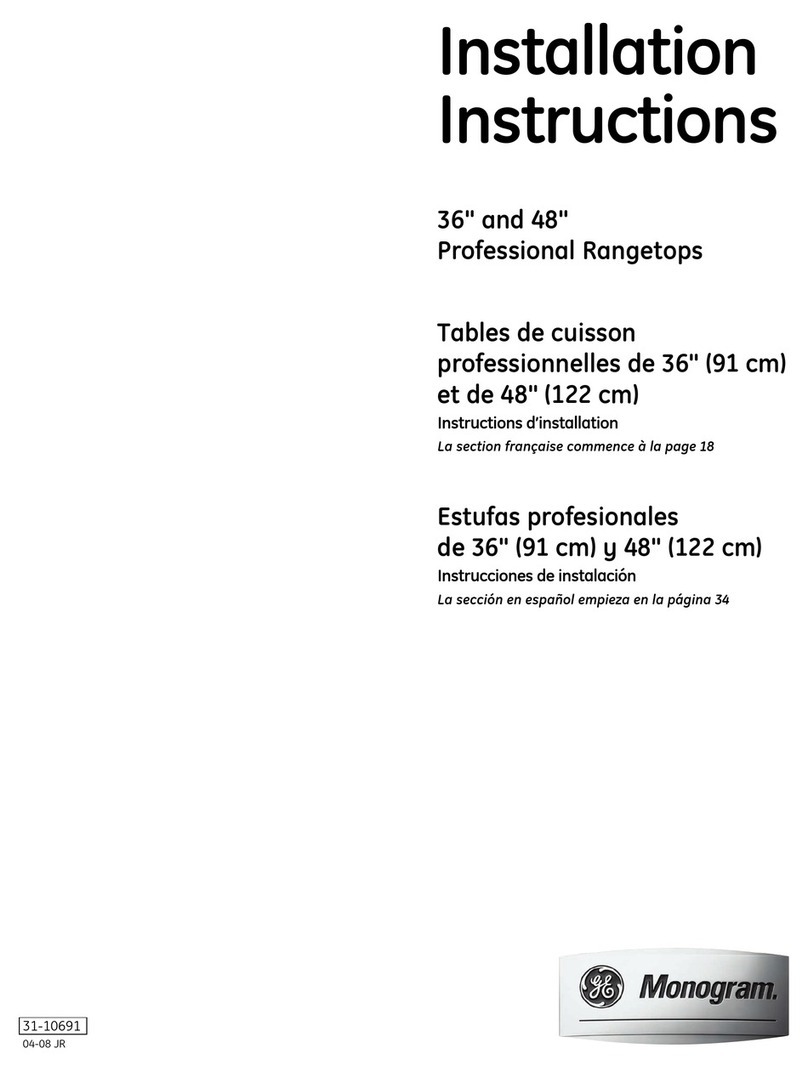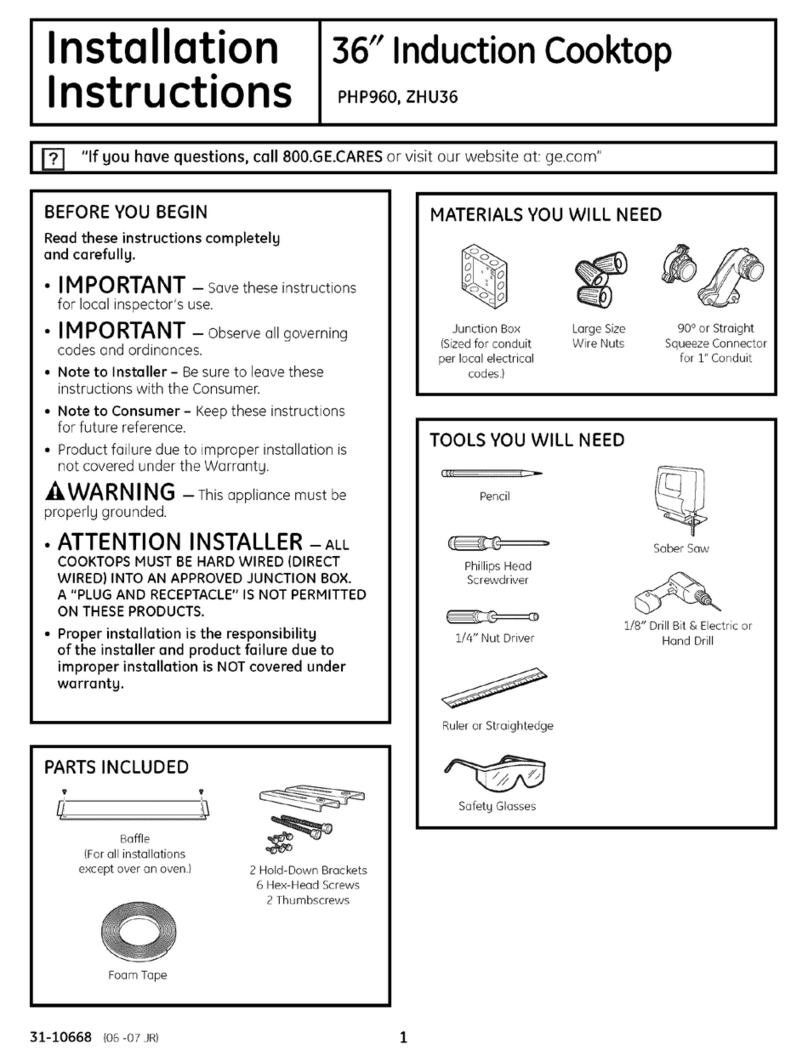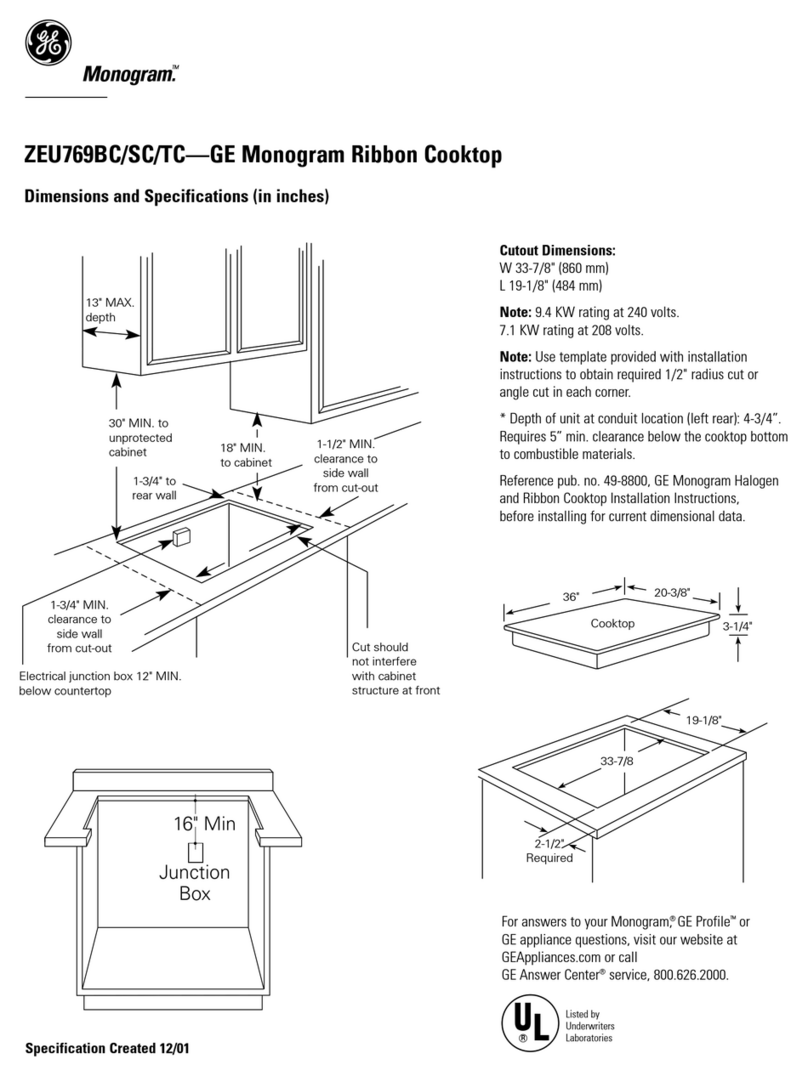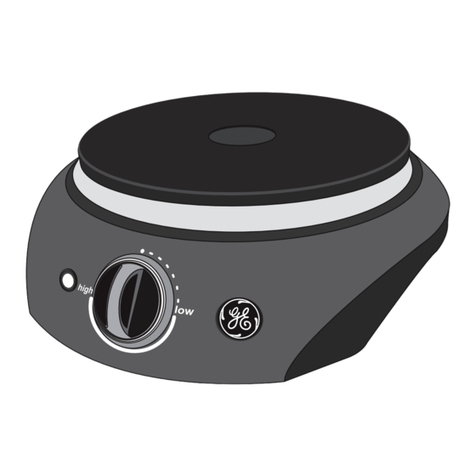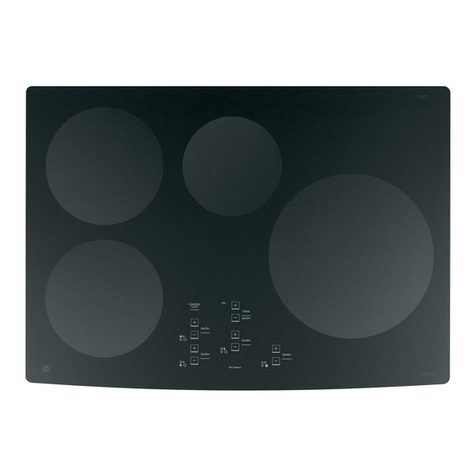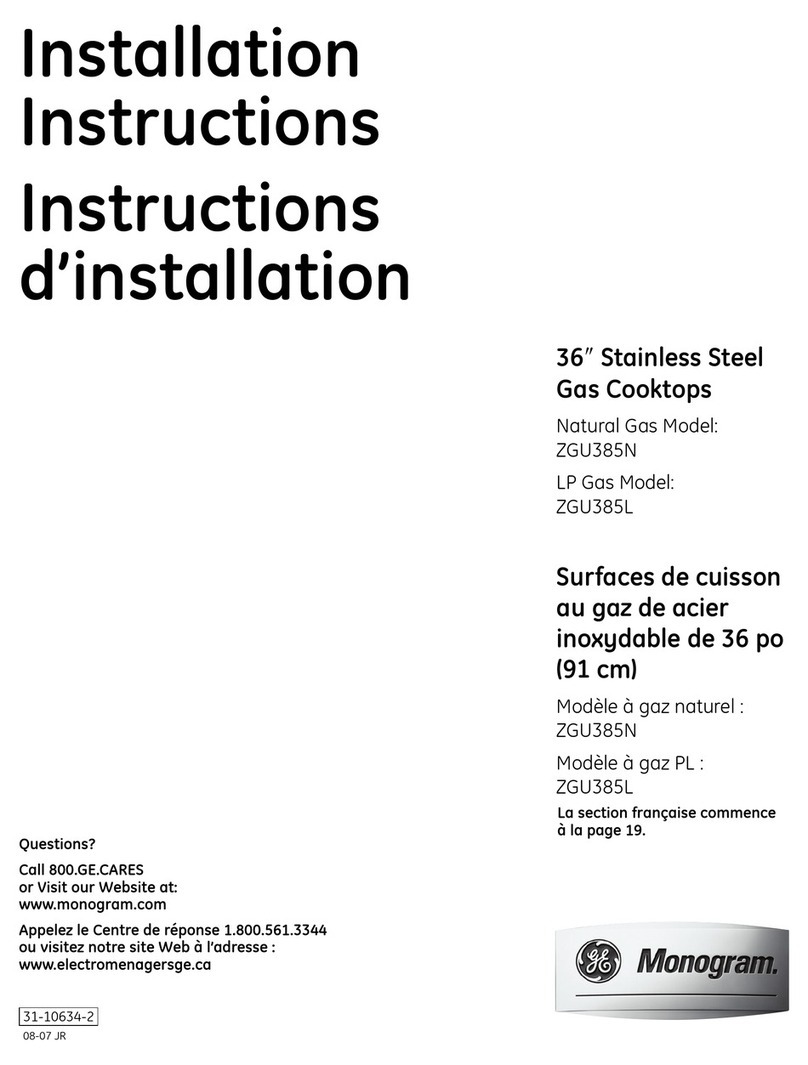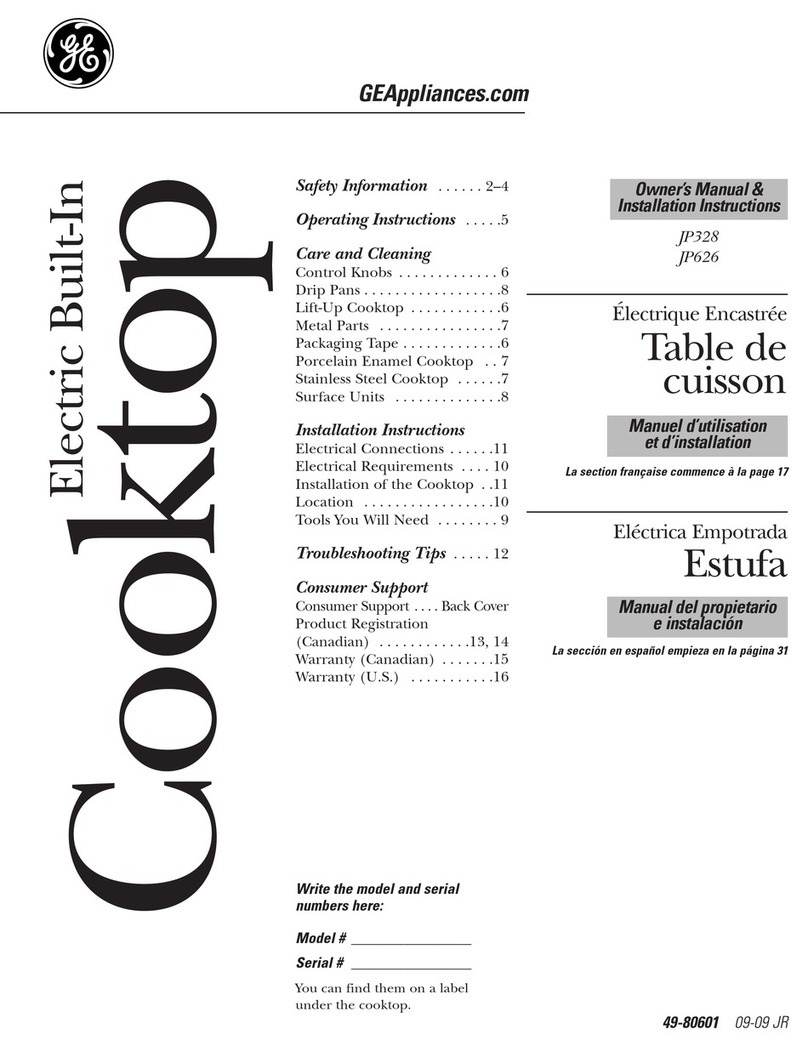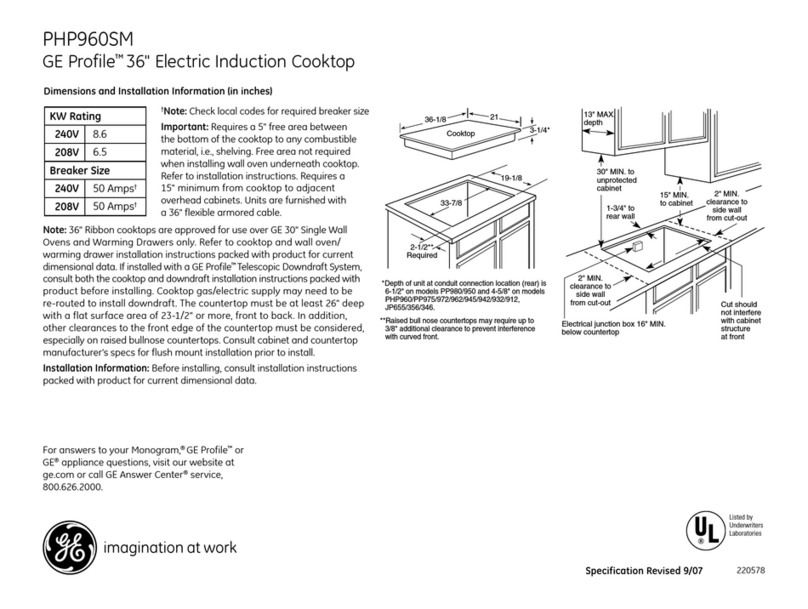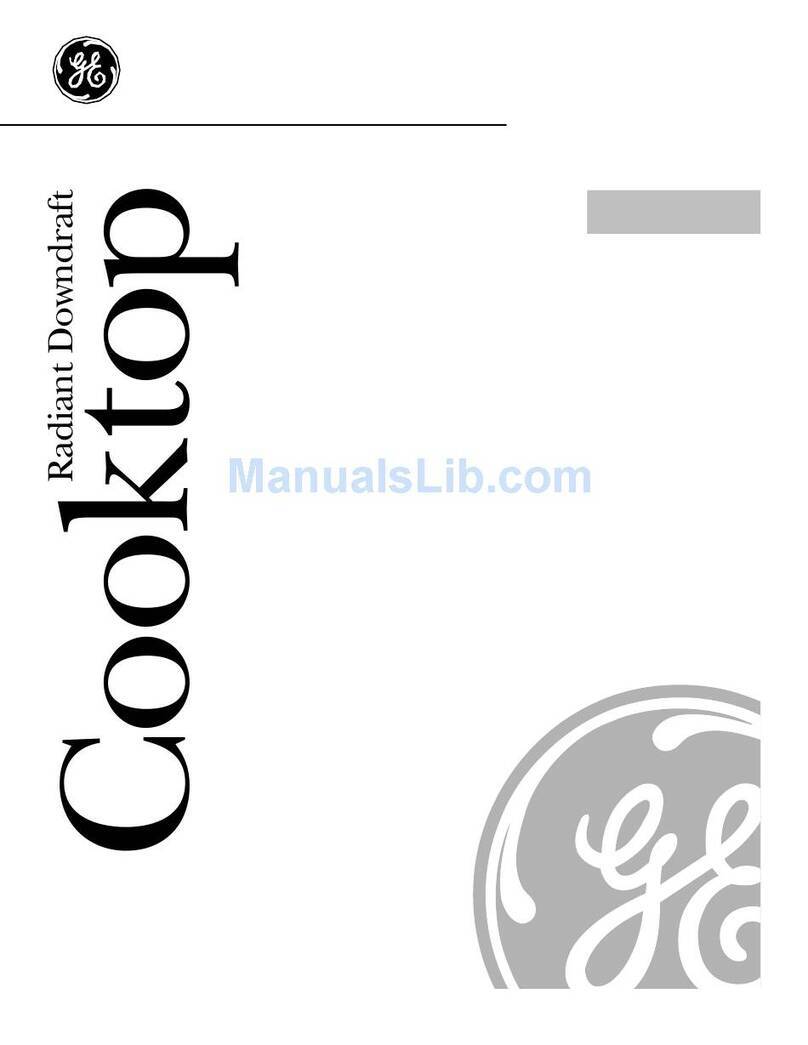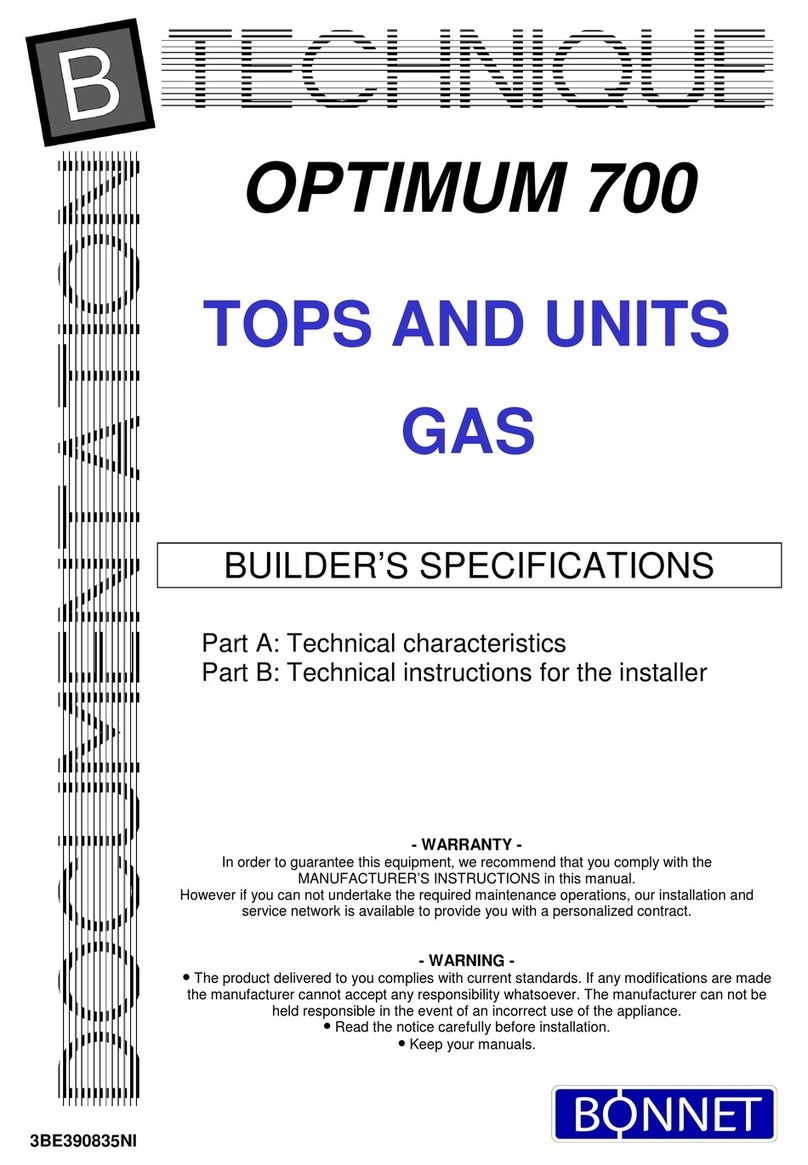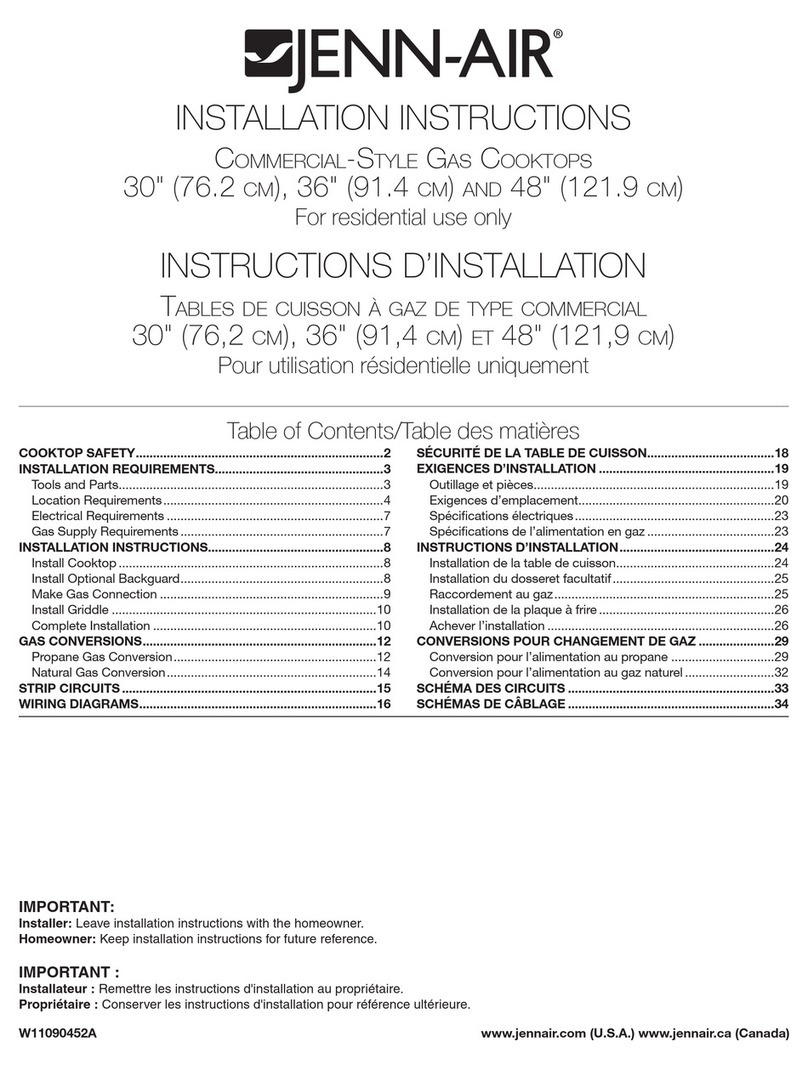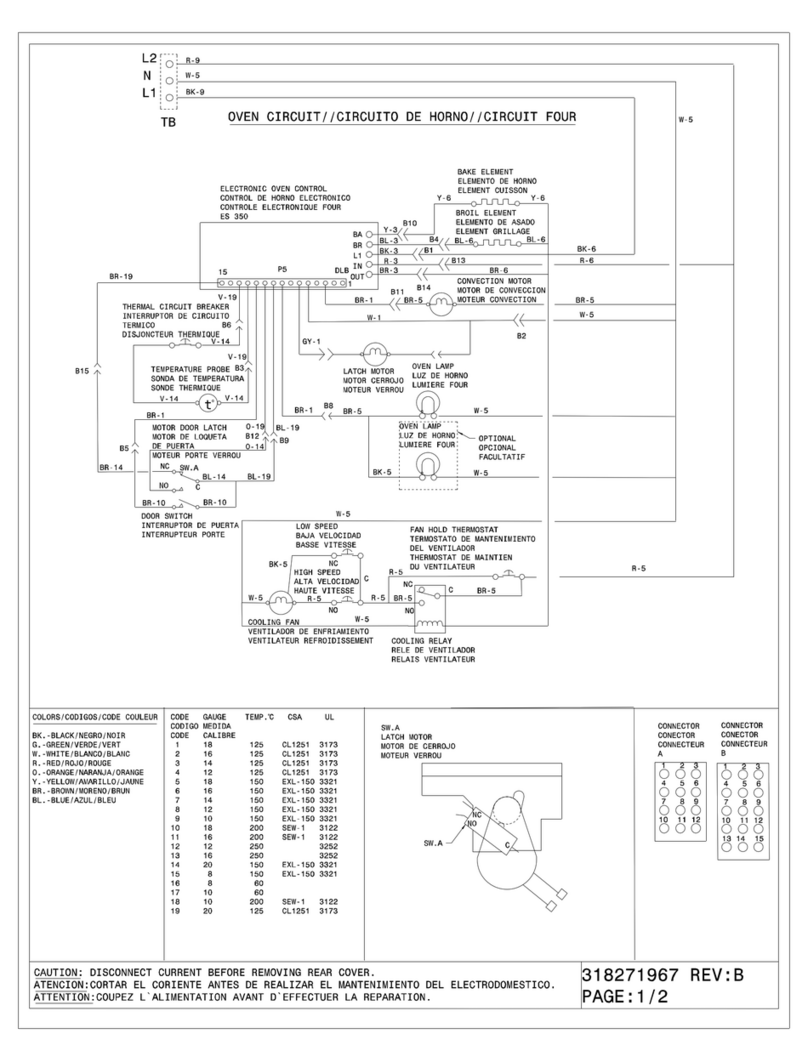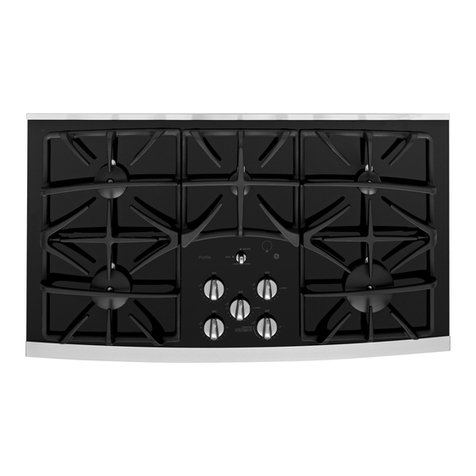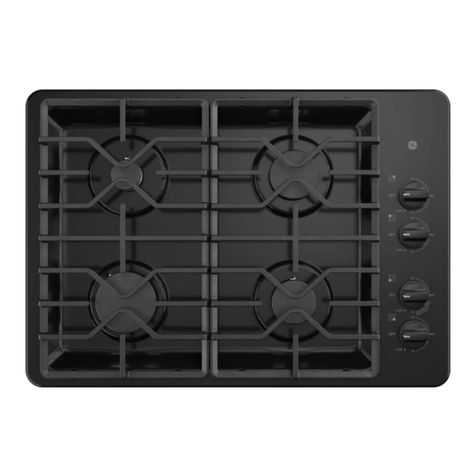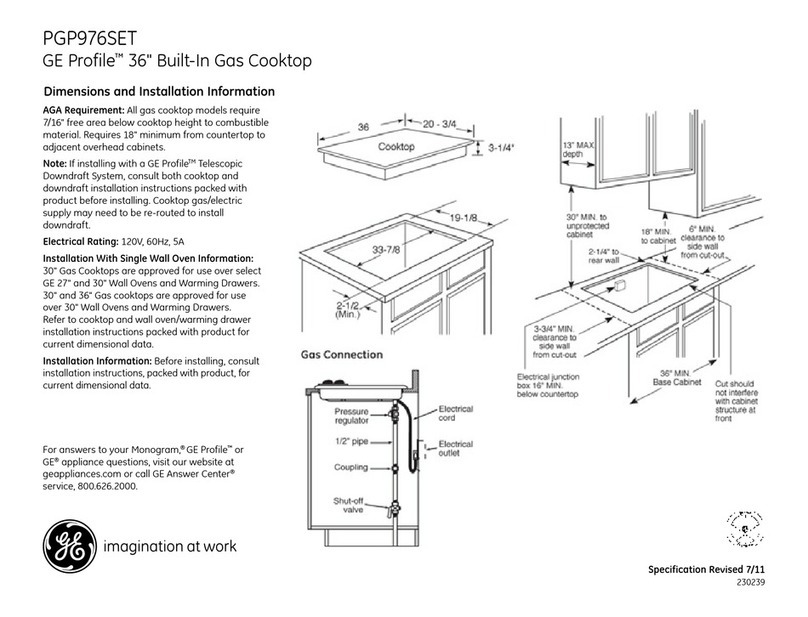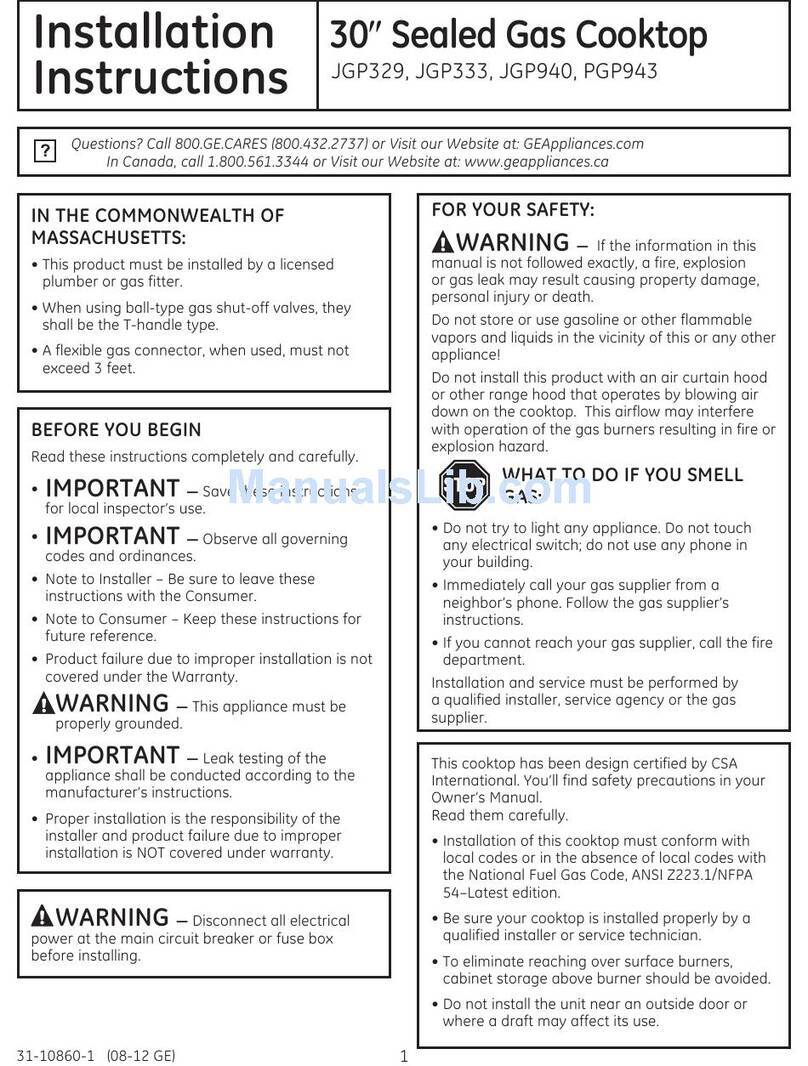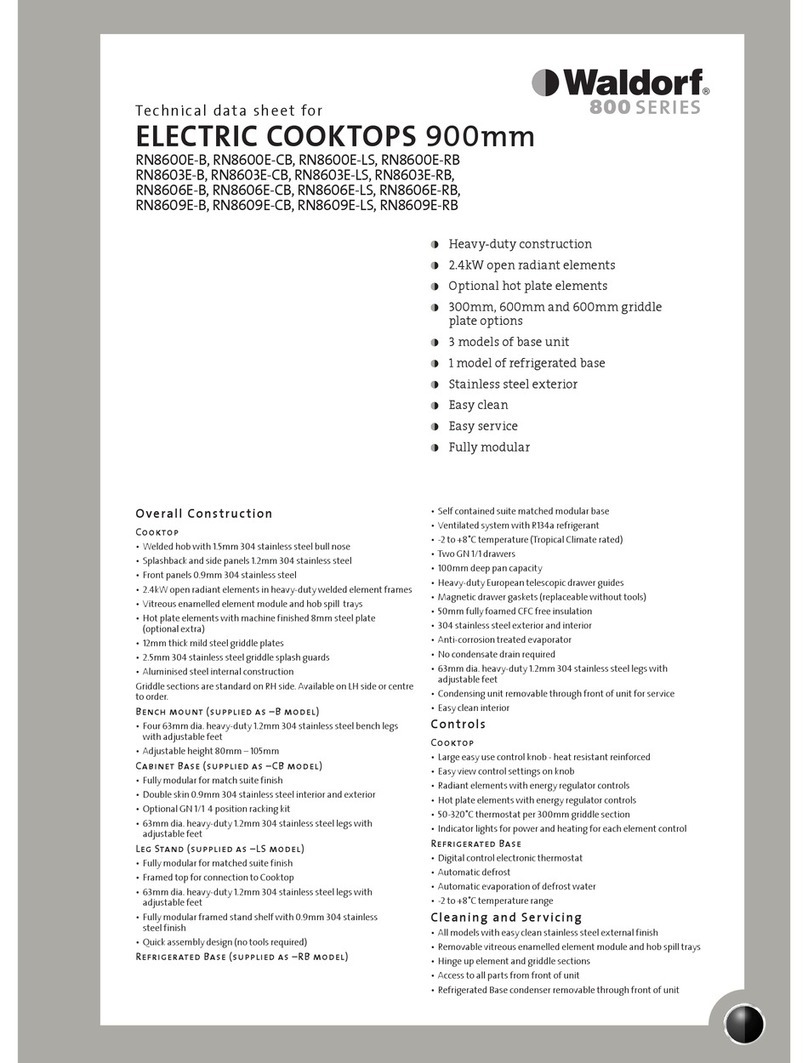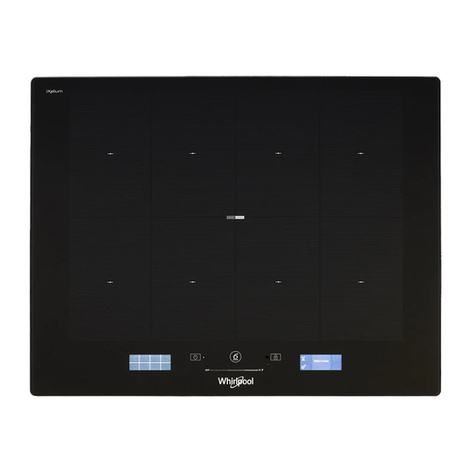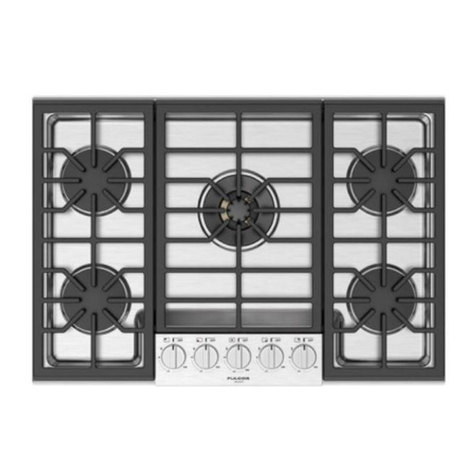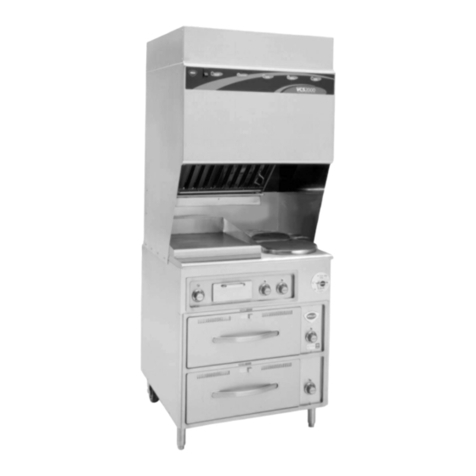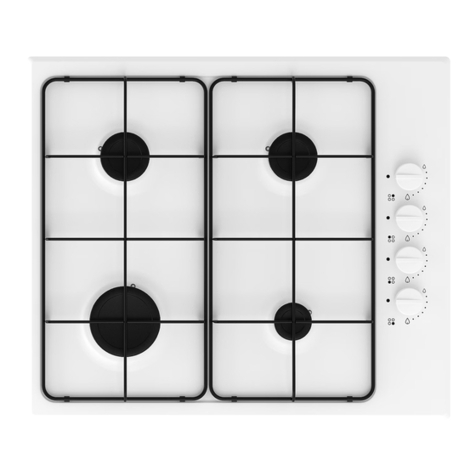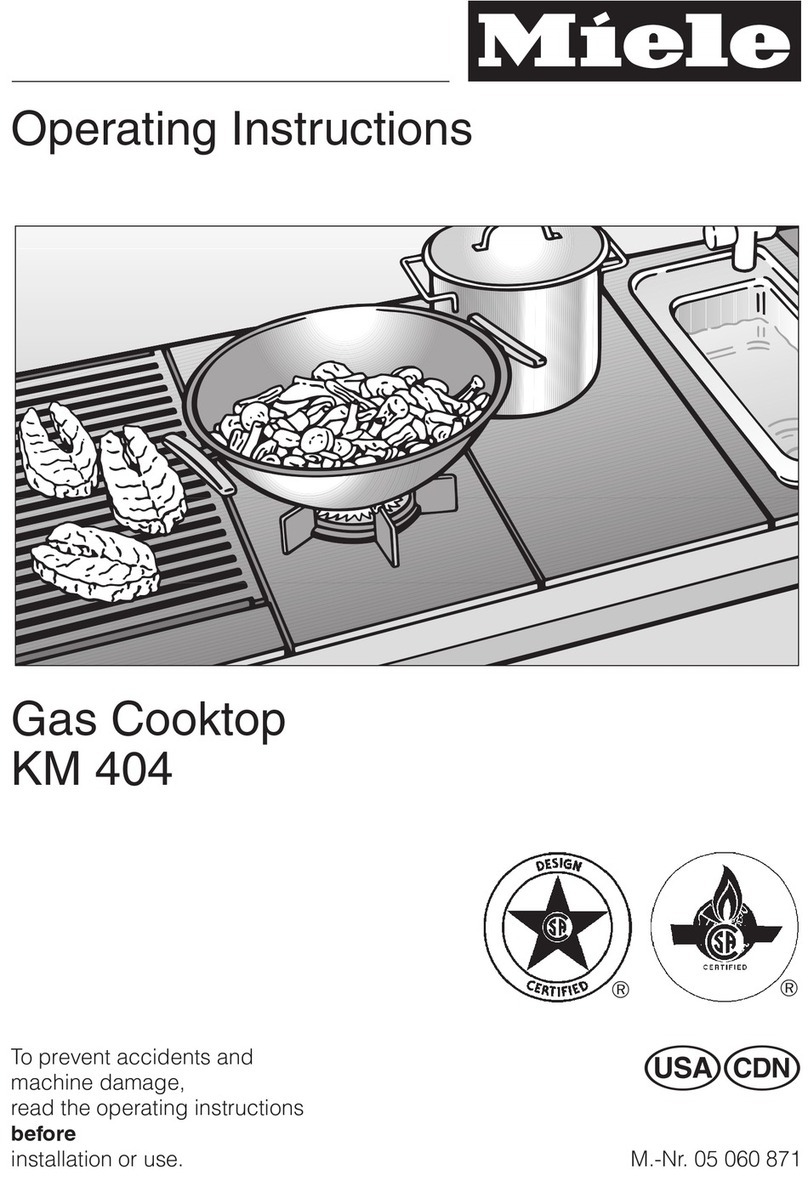Calrod@
Surface Unit Module
See
Calrod”
Surface Unit Module Cooking Guide on pages 10 and
U.
How to Imert Module
Step 1:
Be sure controls are turned
to OFF. To install module, position
plug to outside wall ofcooktop.
Step 2:
Slide module toward
receptacle in side ofcooktop until
plug is engaged completely in
receptacle.
Step 3:
Lower the inside edge of
module into cooktop until it is flush
with cooking surface.
How to Remove Module
Step 1:
Be sure surface units are cool
before attempting to remove module.
Step 2:
Lift up tab at inside edge of
module until base clears the
opening at the side of cooktop.
Step 3:
To unplug, hold module by
the front and back edges and slide
toward center of cooktop. Lift out
when unplugged.
Step
4: If you are storing modules,
do not stack them or store other
materials on top of them. This could
damage or mar surface of modules.
Calrod@
Surface
Ufit
Module
Quetiiom &
Amwers
Q. May I can foods and preserves
on my surface unit coils?
A. Yes,
but only use cookware
designed for
-g
pU~SCS.
Check
the manufacturer’s instructions and
recipes for preserving foods. Be
sure canner is flat-bottomed and
fits over the center of your surface
unit coil. Since canning generates
large amounts of steam, be
carefil
to avoid burns from steam or heat.
Canning should only be done on
surface units.
Q. Can I cover my drip pans with
foil?
A. No. Clean as recommended in
Cleaning Guide.
Q. Can I use special cooking
equipment, like an oriental wok,
on any surface units?
A. Cookware without flat surfaces
is not recommended. The life of
your surface unit can be shortened
and the cooktop can be damaged
from the high heat needed for this
type of cooking. A special flat
bottom wok can be used safely.
9
Q. Why am I not getting the heat
I need from my
uniti
even though
I have the knobs on the right
setting?
A. After turning surface unit off
and making sure it is cool, check to
make sure that your plug-in units
are securely fastened into the
surface connection.
Q.
Why does my cookware tilt
when I
place
them on the surface
unit?
A. Because the surface unit is
not flat. Make sure the feet of
your surface units are sitting on
the inside rim of the trim ring,
and the trim ring is flat on the
cooktop surface.
Q. Why is the porcelain finish on
my cookware coming
o~
A. If you set your surface unit
coil higher than required for the
cookware material and leave it, the
finish may smoke, crack, pop, or
bum depending on the pot or pan.
Also, a too high heat for long
periods, and small amounts of dry
food, may damage the finish.
